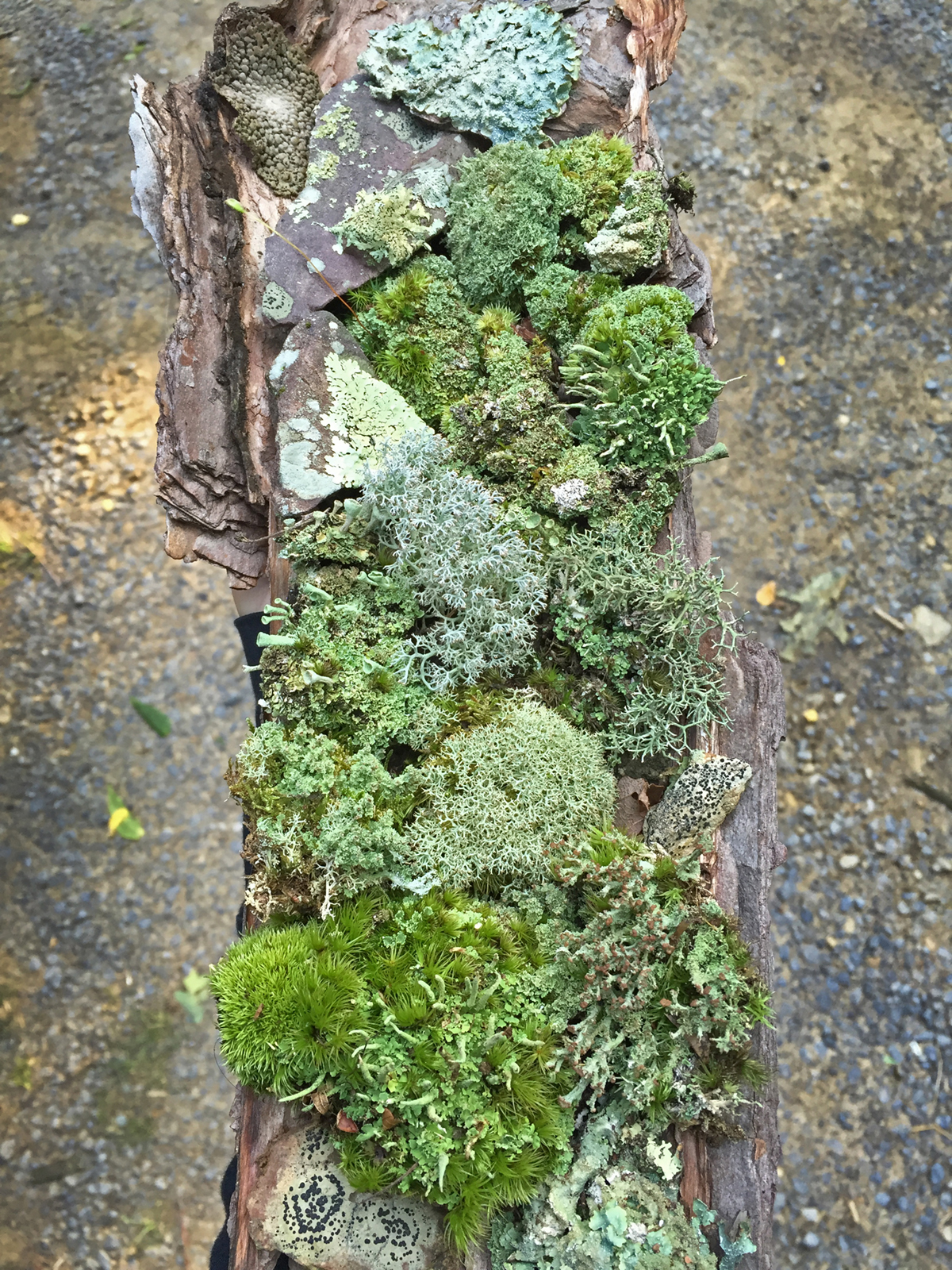
Lichen. Photo by Amanda Strawderman
By Hal & Linda Mahan
Some look like colorful painted patches on rocks and tree trunks. Others are often mistaken for mold; still others resemble clumps of moss. Lichens are fascinating living things that play an important role in nature.
Lichens are a combination of an algae (a simple green plant) and a fungus (like mushrooms), making them a challenge to classify. The fungus component provides a structure for the algae that manufactures the food that keeps them both going.
Biologists call this kind of relationship “mutualism,” with the two different organisms providing benefit to each other. Lichens survive in some of the most extreme conditions on earth, from rocky shores to bare rocks to tree bark to deserts, providing the first substrate upon which the seeds of higher plants can later become established.
Have you noticed the colorful crusty patches of lichens on bare rock or rock walls or gravestones? These are known as “crustose.” Other lichens (called “fruticose”) resemble tiny shrubs and are used by model makers to represent trees in their miniature towns or landscape. Another type of lichen called Old Man’s Beard (Usnea) looks a little like Spanish moss. You will see it hanging from the branches of trees in higher elevations of the Southern Appalachians. It is a favorite nesting material of a tiny, but striking, warbler called the Northern Parula.
Lichens are a common source of natural dyes. The vibrant red, yellow and purple hues are extracted by boiling in water or steeping in ammonia. Many lichens are used medicinally across the world. It has been estimated that half of all lichen species have antibiotic properties.
They are important to science in other ways as well, serving as environmental indicators of pollutants in a sort of “canary in a coal mine” fashion. The higher the diversity of lichen species in an area, the “cleaner” the environment. Also, lichens display growth abnormalities when exposed to various environmental pollutants.
If you would like to encourage lichens in your own backyard, try this recipe for “lichen slurry.” Add one tablespoon of ground-up lichen to one pint of natural yogurt or buttermilk and mix well in a blender. Using a brush or sponge, paint this slurry onto the object you wish to have act as a lichen host, such as a boulder or rock wall.
We have identified on our property here in Asheville more than a dozen species of lichens. It’s fun to use them in terrariums, or little minienvironments in a glass container. Simply place a layer of fine mulch on the bottom of an interesting glass container and then add a layer of sphagnum moss or rich soil. You can make a garden of tiny plants and decorate it with small branches or rocks with colorful lichens. Make sure you keep your lichen garden out of direct sunlight, and enjoy these interesting organisms.
For Further Learning: Lichens of North America, by Irwin M. Brodo, Sylvia Duran Sharnoff and Stephen Sharnoff. 2001. The ultimate book for lichen lovers.
Laura and Hal Mahan are owners of The Compleat Naturalist, located at 2 Brook Street in the Historic Biltmore Village. To learn more, visit compleatnaturalist.com or call 828.274.5430.






